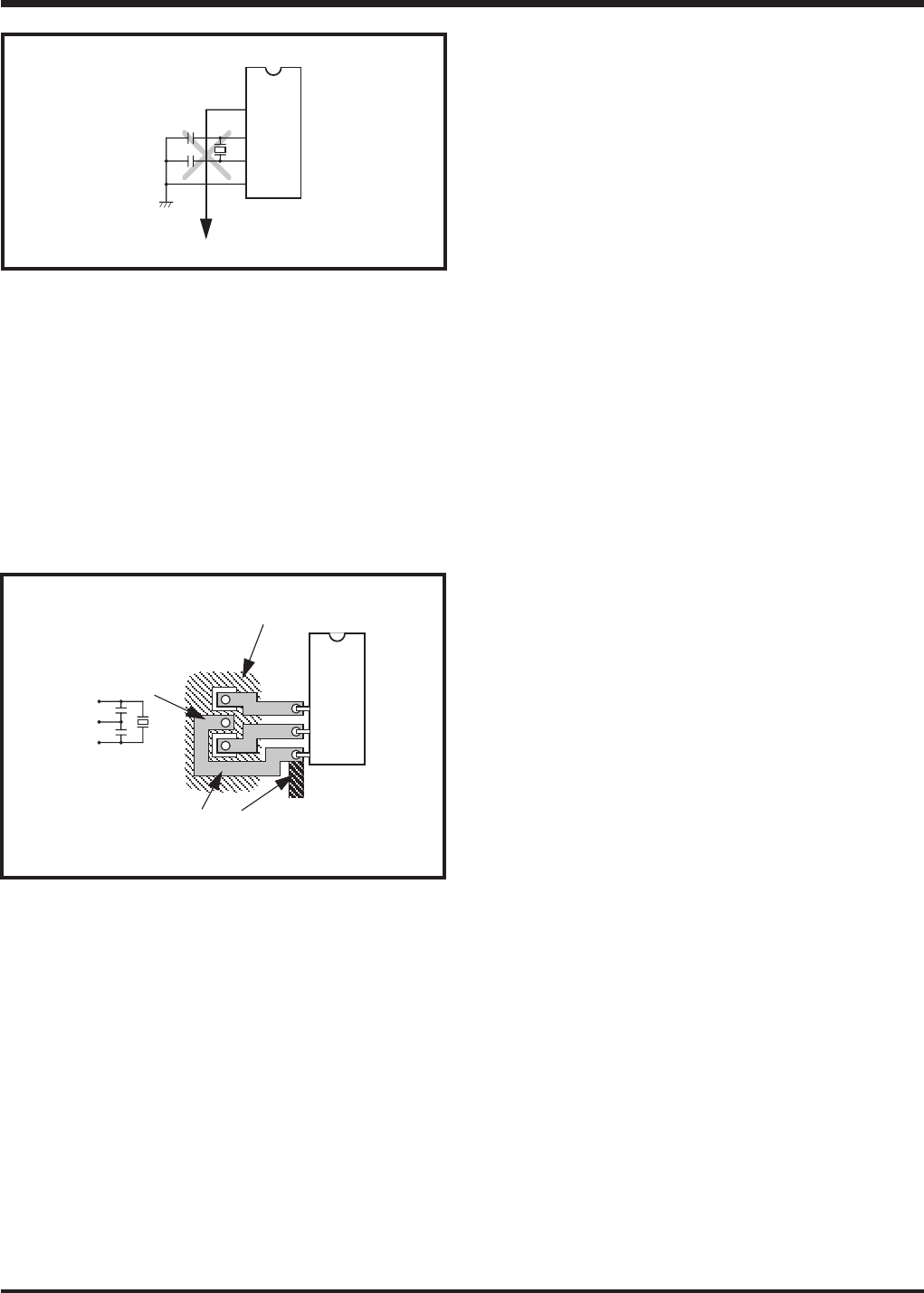
3-28
APPENDIX
3.4 Notes on noise
4513/4514 Group User’s Manual
Fig. 3.4.9 Wiring to a signal line where potential
levels change frequently
(3) Oscillator protection using VSS pattern
As for a two-sided printed circuit board, print
a VSS pattern on the underside (soldering side)
of the position (on the component side) where
an oscillator is mounted.
Connect the VSS pattern to the microcomputer
VSS pin with the shortest possible wiring.
Besides, separate this VSS pattern from other
VSS patterns.
Fig. 3.4.10 VSS pattern on the underside of an
oscillator
XIN
XOUT
VSS
CNTR
Do not cross
N.G.
XIN
XOUT
VSS
An example of VSS patterns on the
underside of a printed circuit board
Oscillator wiring
pattern example
Separate the V
SS line for oscillation from other VSS lines
3.4.5 Setup for I/O ports
Setup I/O ports using hardware and software as
follows:
<Hardware>
• Connect a resistor of 100 Ω or more to an I/O port
in series.
<Software>
• As for an input port, read data several times by
a program for checking whether input levels are
equal or not.
• As for an output port or an I/O port, since the
output data may reverse because of noise, rewrite
data to its output latch at fixed periods.
• Rewrite data to pull-up control registers at fixed
periods.
3.4.6 Providing of watchdog timer function by
software
If a microcomputer runs away because of noise or
others, it can be detected by a software watchdog
timer and the microcomputer can be reset to normal
operation. This is equal to or more effective than
program runaway detection by a hardware watchdog
timer. The following shows an example of a watchdog
timer provided by software.
In the following example, to reset a microcomputer
to normal operation, the main routine detects errors
of the interrupt processing routine and the interrupt
processing routine detects errors of the main routine.
This example assumes that interrupt processing is
repeated multiple times in a single main routine
processing.


















